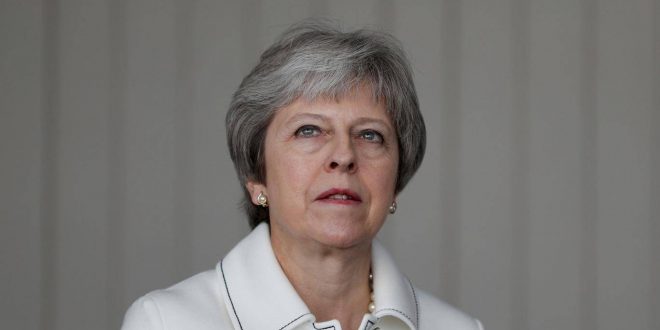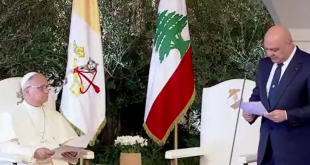European Commission officials tell The Independent Ms May’s plan would be unacceptable and would go back on previous commitments made by British negotiators
Brussels has rejected Theresa May’s new customs proposal less than 24 hours after the prime minister set it out in a bid to placate Brexiteers in her cabinet.
European Commission officials told The Independent Ms May’s plan would be unacceptable and would go back on previous commitments made by British negotiators.
A day earlier the prime minister had said the “backstop” plan to avoid a hard border in Northern Ireland – which keeps Britain in alignment with the single market and customs union if no other agreement is reached – would be time limited.
The move was an attempt to assuage Brexiteers such as Boris Johnson, who fear that it would become a backdoor way to keep Britain tied indefinitely to the EU through the customs union and single market.
The controversial fallback arrangements look increasingly likely to come into play, with no other plan for the Northern Ireland border in sight and Ms May’s cabinet deadlocked on what Britain’s future customs relationship with the EU should be.
European Commission officials close to the talks told The Independent that British negotiators had already made written commitments for the backstop to apply “unless and until” another solution was found in Northern Ireland, and that there was no way it could be time limited.
Facing a backlash over the plan from her pro-Brexit ministers, the prime minister sought to calm their fears, telling reporters on Monday: “If it is necessary, it will be in a very limited set of circumstances for a limited time.”
But one Brussels source said: “It will apply for as long as there is no credible alternative. It can’t be time limited or it’s not a backstop.”
Commission officials have pointed to the first page of the draft withdrawal agreement, which includes a note, signed off by both sides, stating that the backstop alignment can be ended only if another solution is found.
“The negotiators agree that a legally operative version of the ‘backstop’ solution for the border between Northern Ireland and Ireland, in line with paragraph 49 of the joint report, should be agreed as part of the legal text of the withdrawal agreement, to apply unless and until another solution is found,” a note on page 1 of the withdrawal agreement says.
A UK government spokesperson said: “The prime minister set out her position yesterday. The fallback solution put forward by the EU is not acceptable, and that’s why we will be bringing forward our own proposal. We want to make progress as soon as possible.”
Cabinet ministers including Boris Johnson and Michael Gove have signalled their unease at the backstop plan in recent days. The foreign secretary issued an apparent veiled warning to the PM while speaking to reporters on a trip to Latin America, warning her against “betrayal”.
“Brexiteers fearing betrayal over the customs backstop must understand that the prime minister has been very clear that neither option is an outcome we desire – we want a deal with the EU and she will deliver it,” he said.
“I’m convinced that the prime minister will be true to her promises of a Brexit deal that sees Britain come out of the customs union and single market, have borders as frictionless as possible, reject European Court of Justice interference, control immigration and free to conduct unhindered free trade deals across the world.”
Speaking separately, Mr Gove was at pains to make clear that the backstop was “intended not to be implemented” and was “there just in case”.
Brexiteer cabinet ministers have repeatedly rolled over for Downing Street after issuing similar veiled warnings on issues ranging from the Brexit divorce bill to the transition period, however.
The row over the backstop is the latest twist in the wrangling over what post-Brexit customs arrangement the UK and EU will have.
The backstop was agreed on paper in December as part of a deal – the joint report – struck between Theresa May and Jean-Claude Juncker in Brussels. The section on the backstop says that “in the absence of agreed solutions” to the Northern Ireland border, “the United Kingdom will maintain full alignment with those rules of the internal market and the customs union which, now or in the future, support North-South cooperation, the all-island economy and the protection of the 1998 Agreement”.
It has since become clear that the UK and EU have begun to interpret the agreement in different ways, however. Downing Street says the entire UK will stay in alignment under the backstop, while Brussels says the agreement was intended only to maintain full alignment in Northern Ireland.
The difference in interpretation comes because the UK desperately also wants to prevent customs checks at Irish Sea ports between Great Britain and Northern Ireland. The DUP, on whose votes the Conservatives rely for a majority in the House of Commons, are staunchly unionist and have threatened to block any plan that puts any checks between Northern Ireland and Great Britain. Ms May has said “no British prime minister” could agree to such a state of affairs.
Brussels is, however, concerned that the UK would gain access to the single market without having to commit to its four freedoms – effectively gaining a preferential deal.
Talks between the two sides started again in Brussels on Tuesday with the remaining issues of the withdrawal agreement, Northern Ireland and the future relationship on the agenda. With the focus of negotiations now clearly between Theresa May and her own cabinet, the EU chief negotiator Michel Barnier last week said there had been little progress on any issue since the March meeting of the European Council.
The Independent
 Lebanese Ministry of Information
Lebanese Ministry of Information



